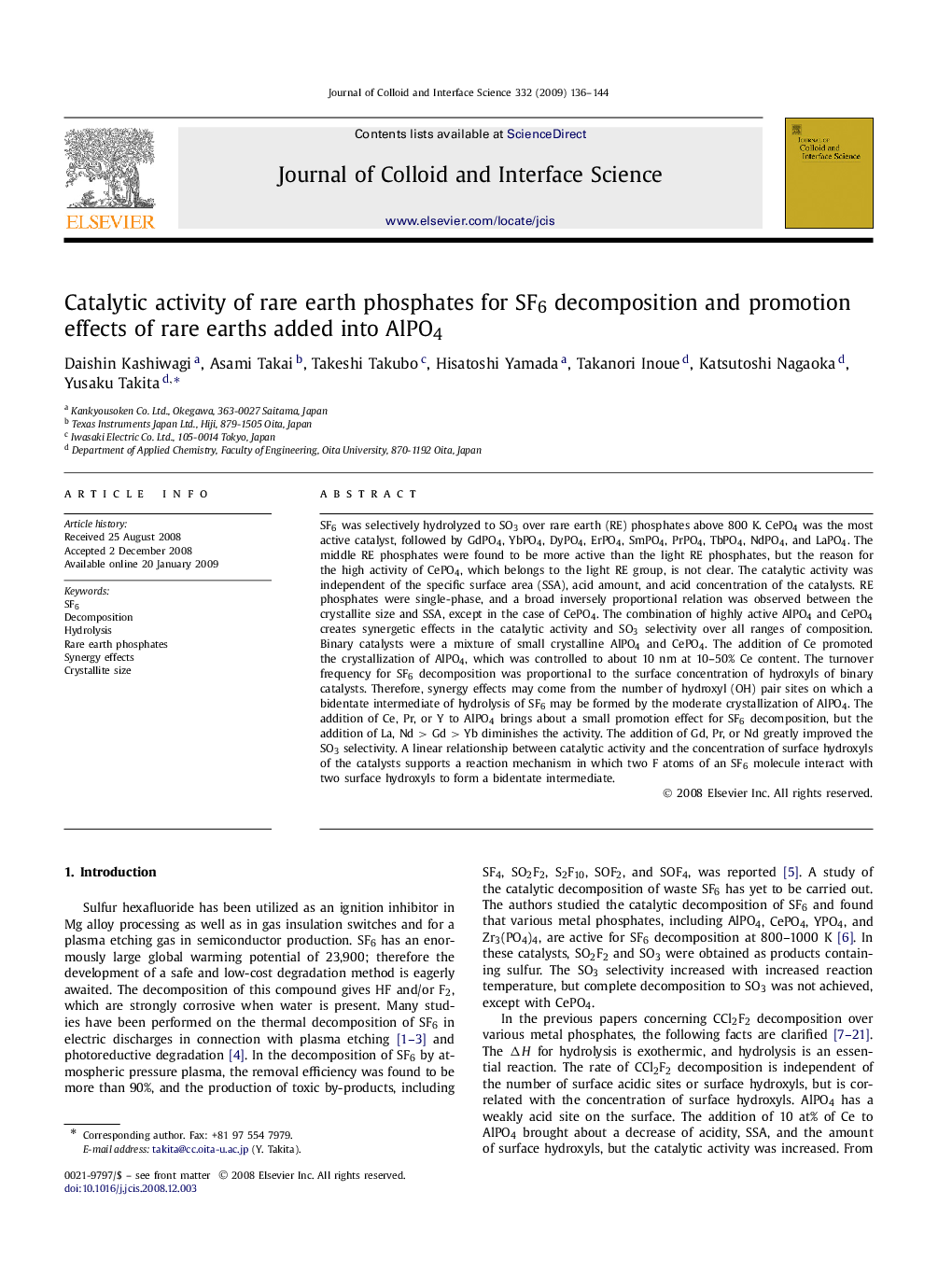| کد مقاله | کد نشریه | سال انتشار | مقاله انگلیسی | نسخه تمام متن |
|---|---|---|---|---|
| 610495 | 880650 | 2009 | 9 صفحه PDF | دانلود رایگان |

SF6 was selectively hydrolyzed to SO3 over rare earth (RE) phosphates above 800 K. CePO4 was the most active catalyst, followed by GdPO4, YbPO4, DyPO4, ErPO4, SmPO4, PrPO4, TbPO4, NdPO4, and LaPO4. The middle RE phosphates were found to be more active than the light RE phosphates, but the reason for the high activity of CePO4, which belongs to the light RE group, is not clear. The catalytic activity was independent of the specific surface area (SSA), acid amount, and acid concentration of the catalysts. RE phosphates were single-phase, and a broad inversely proportional relation was observed between the crystallite size and SSA, except in the case of CePO4. The combination of highly active AlPO4 and CePO4 creates synergetic effects in the catalytic activity and SO3 selectivity over all ranges of composition. Binary catalysts were a mixture of small crystalline AlPO4 and CePO4. The addition of Ce promoted the crystallization of AlPO4, which was controlled to about 10 nm at 10–50% Ce content. The turnover frequency for SF6 decomposition was proportional to the surface concentration of hydroxyls of binary catalysts. Therefore, synergy effects may come from the number of hydroxyl (OH) pair sites on which a bidentate intermediate of hydrolysis of SF6 may be formed by the moderate crystallization of AlPO4. The addition of Ce, Pr, or Y to AlPO4 brings about a small promotion effect for SF6 decomposition, but the addition of La, Nd > Gd > Yb diminishes the activity. The addition of Gd, Pr, or Nd greatly improved the SO3 selectivity. A linear relationship between catalytic activity and the concentration of surface hydroxyls of the catalysts supports a reaction mechanism in which two F atoms of an SF6 molecule interact with two surface hydroxyls to form a bidentate intermediate.
Rare earth phosphates are effective for SF6 decomposition and highly selective for SO3 formation. Reaction proceeds via a bidentate intermediate in which two F atoms interact with two surface hydroxyls.Figure optionsDownload as PowerPoint slide
Journal: Journal of Colloid and Interface Science - Volume 332, Issue 1, 1 April 2009, Pages 136–144